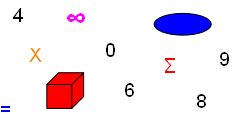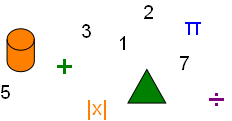



Changing Fractions to Decimals


The process of changing fractions to decimals is math division. Any fraction can be converted to an equivalent decimal value by dividing the numerator by the denominator.
5/9 = 5 ÷ 9 = .5555
The result of the division of 5 by 9 is a repeating number answer. Since we do not need to continue the division we write the answer with as many digits as we need and understand the decimal number continues to repeat. The number of digits to the right of the decimal point that we use in an answer are significant digits.
.555
9 / 50
− 45
50
− 45
50
− 45
5
9 is greater than 5. In basic long division it is a remainder of 5. To resolve this division we make the 5 appear larger by placing a 0 after the 5. We can now divide 50 by 9. We use a decimal position for each 0 added to the resulting number during division.
29/7 = 29 ÷ 7 = 4.1428
4.142
7 / 29
− 28
10
− 7
30
− 28
20
− 14
6
29 is greater than 7. Part of the numeric answer will have digits to the left of a decimal point. The reminder of 1 begins the decimal portion of the answer (29 − 28 = 1). 0 is placed after the 1 to make it larger than 7.
The last decimal digit of an answer is often rounded. To round, use the next digit to the right that is not to be placed into the division result. If this digit is greater than 4 (5 or larger) then round up by making the last right decimal digit one numeric value larger. Rounding our result of 4.142 would give us 4.143 (6 is greater than 4). It is 3 significant digits to the right of the decimal point.
If working with a fraction and a whole number like 4 5/12 there isn’t any reason to change the fraction to an improper fraction. The resulting answer will be 4 plus the decimal equivalent of 5/12. 4 5/12 = 4.4166.
It makes less work if a fraction is first reduced before changing it to a decimal. In the example above to convert 29/7 to a decimal value we could first reduce 29/7 to 4 1/7. We write the whole number to the left of the decimal point and the decimal answer from the division of the fractional portion to the right of the decimal point.
Copyright © DigitMath.com
All Rights Reserved.